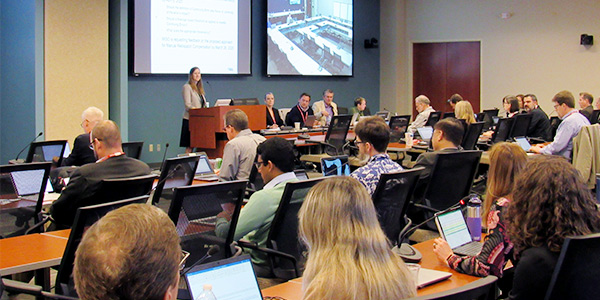MISO said last week it continues to weigh multiple changes to its markets and resource adequacy construct as part of its multiyear resource availability and need (RAN) project.
On the market side, MISO is researching what it would take to implement a forward market process that can guide commitment decisions before the day-ahead market is able.
Speaking during a Market Subcommittee teleconference Thursday, MISO Director of Market Design Kevin Vannoy said the RTO will soon circulate a survey among generation owners that self-commit before the day-ahead market to better understand what drives their decisions. The survey will be sent to 28 market participants that own the 115 coal and natural gas units that comprise 90% of self-committed day-ahead energy.
“We’re looking for those drivers and reasons behind self-commitments,” Vannoy said. “The day-ahead market was obviously designed years ago … where there were limited algorithms and optimization. I think we’re still living in that world a bit.”
Senior Market Engineer Chuck Hansen also said MISO could expand its multiday operating margin forecasts as part of a forward market.
MISO late last year began publishing a first edition of its multiday operating margins, which predicts supply conditions six days in advance. The multiday forecast is for informational purposes only and does not serve a multiday financial market.
“It’s designed to be built upon. You don’t have to scrap the whole thing to make a change,” Hansen said of the forecast’s design.
MISO estimates that the forecast — meant for resources that self-commit — is downloaded about 20 to 30 times a day.
A multiday — or forward — market mechanism along with better scarcity pricing are market-side improvements being considered in MISO’s multifaceted RAN effort. Resource adequacy changes under discussion include establishing new reliability requirements, re-examining capacity resource accreditation and migrating the capacity auction from an annual basis to a seasonal or sub-annual basis. (See MISO Stakeholders Split on Seasonal RA Measures.)
A sub-annual RA format remains unpopular among MISO stakeholders, with some skeptical the RTO will be able to demonstrate a wintertime loss-of-load risk that could drive the seasonal changes. MISO staff have repeatedly said that its current, summer-focused loss-of-load expectation (LOLE) analysis ignores an emerging wintertime risk.
Using 2018 data, MISO found a moderate loss-of-load risk for several hours in January and September; however, MISO said the high risk remains confined to July only. The non-summer loss-of-load risk will only worsen with the continued fleet shift toward renewables, the RTO warned. It said inputting data from 20-year futures scenarios used in the annual transmission expansion plan yields loss-of-load risk in February and December in addition to January and September.
“The summer risk is just one element of risk to the system,” Jessica Harrison, MISO director of research and development, said at a Resource Adequacy Subcommittee teleconference Wednesday.
The Brattle Group’s Johannes Pfeifenberger suggested that MISO, in addition to an LOLE analysis, establish an expected unserved energy (EUE) standard, which measures system capability to continuously serve all loads to all delivery points while meeting planning criteria. Pfeifenberger said EUE standards aren’t commonly used in U.S. RTOs.
MISO is currently drafting a white paper on the problem statement behind the next round of proposed RAN fixes. The RTO plans to hold a virtual workshop late this month to go over the white paper.
“There won’t be new things that no one has ever seen or heard,” RASC liaison Scott Wright said of the white paper.
Like last month, multiple stakeholders expressed apprehension about MISO presenting a finalized white paper that doesn’t include stakeholders contributions. Several said MISO could reach conclusions in the white paper with which they don’t agree.
“That would be a problematic foundation to start talking about solutions with,” WPPI Energy’s Steve Leovy said.
But Consumers Energy’s Kevin Van Oirschot said the “new world order” in the footprint means MISO shouldn’t wait any longer to make market and resource adequacy changes. “I think we’re in a world where expediency is what we need,” he said.




